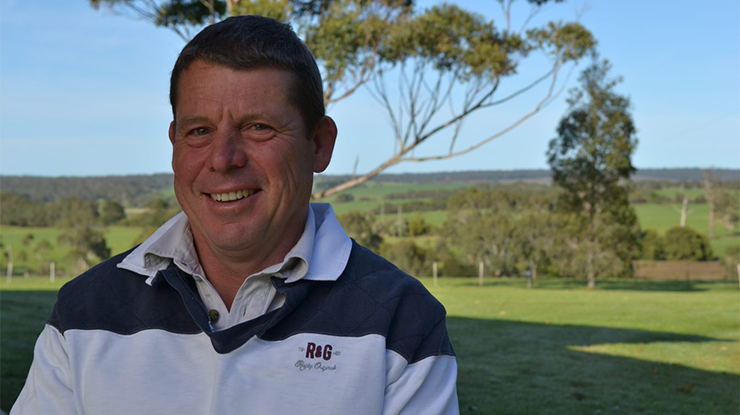
Genetics drive business growth
Victorian prime lamb producers Philip and Maz Gough have transformed their business using genetic selection tools and harnessing the benefits of hybrid vigour.
The business has evolved from running five different enterprises in the 1990s to, today, focusing on producing prime lambs for the supermarket trade and using their knowledge of genetics and best practice farm management to achieve their goals.
“Our interest in lamb started in 1995 when we began selling lambs finished on summer crops,” Philip said.
“We became more interested when we realised the potential to fast‑track our productivity improvement through genetic selection.”
Philip set about breeding a ewe that could wean 150% of lambs annually to suit the supermarket trade (fat score 3, 18–24kg carcase weight) at 130 days of age.
To do this, some production goals were set that would improve their viability:
- maintaining hybrid vigour
- lifting kilograms of lamb produced/hectare from under 300 to more than 400
- improving wool cuts from 4kg to above 5kg/head
- making as much money from as few animals as possible to achieve labour efficiencies
- producing efficient, environmentally fit animals.
From this, a crossbreeding program, based on Corriedale and Coopworth, was born that utilised the LAMBPLAN database to select high genetic merit animals on breeding values that the family could manage easily.
“We felt these breeds complemented each other but differed enough to deliver a good dose of hybrid vigour,” Philip said.
Other management strategies Philip put in place to support the genetic selection decisions include:
- using LAMBPLAN data on rams to aggressively select for high fertility in maternal ewes
- selecting rams on their breed purity for hybrid vigour maximisation
- only breeding self‑replacers from ewes that were conceived as a multiple and produce multiple conceptions each year
- tagging ewes which need assistance during lambing, for future culling
- pregnancy scanning to measure losses and to segregate ewes carrying singles, twins and triplets for lambing
- vaccinating for campylobacter
- reducing paddock and mob sizes.
In the past 10 years, Philip has seen his lambing percentage per ewes joined climb from 127 to 154 – the goal was an average of 150. The amount of lamb produced per hectare has also jumped, from 363 to 440kg.
Since he started selecting on ASBVs for high early growth rates, coupled with better flock management, Philip has also achieved higher lamb weaning weights.



